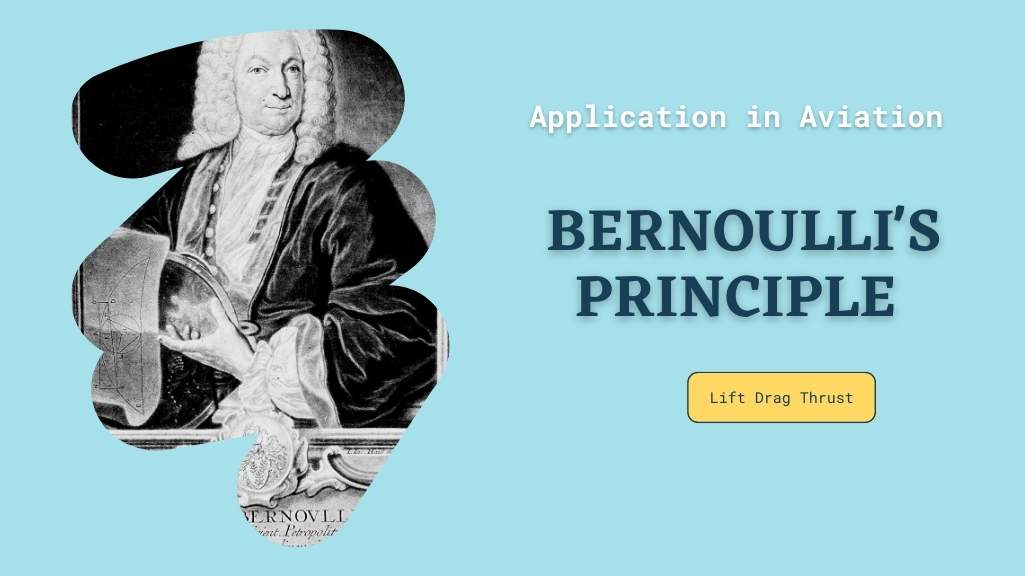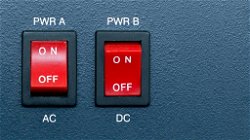Bernoulli's Principle and its Application in Aviation
Swati Mandana
. 3 min read
Although history remembers the Wright brothers as the pioneers of aviation, they were by no means the first humans to take to the air. There are a number of different cultures that have creation myths that talk about being able to fly without the assistance of any technology. However, unlike these mythical tales, the Wright brothers aimed to turn the dream of flying into reality through their innovative designs. Incorporating Sir George's groundbreaking work into their own, they devised a revolutionary aircraft that not only incorporated his principles but also employed modern advancements such as cam chat, enabling them to communicate and collaborate effectively during the design and testing process.

Explain Bernoulli's Principle
There is a widespread belief that Bernoulli's principle ought not to be true; however, this could be the result of a misunderstanding regarding what Bernoulli's principle actually states. The following is an explanation of Bernoulli's principle, which is known as Bernoulli's principle: In a fluid moving in a horizontal direction, the areas of the flow that experience higher speeds will experience lower pressures than the areas that experience lower speeds.
Why is it necessary for it to be in a Horizontal Position?
Therefore, within a horizontal water pipe that varies in diameter, areas of the pipe in which the water is moving quickly will experience lower pressure than areas of the pipe in which the water is moving slowly. Many people find this to be puzzling because they generally think of high pressures being associated with high speeds. However, in the following paragraph, we will demonstrate that this is really just a different way of stating that the water's velocity will increase if there is more pressure behind it than there is in front of it.
Bernoulli's Theorem
Bernoulli's theorem implies that if the fluid flows horizontally in such a way that there is no change in the gravitational potential energy, then a decrease in fluid pressure is associated with an increase in fluid velocity. This is true even if the fluid is moving at the same speed throughout the entire flow. For instance, if the fluid is moving through a horizontal pipe that has a different cross-sectional area at different points, the fluid will move more quickly through the areas of the pipe that are more constricted.
Lift
The term "lift" refers to the upward force that is generated when air flows over a wing. An airfoil is a specific kind of shape that can be seen in the cross-section of a wing or blade, such as the kind that would be found on a propeller, rotor, or turbine. When a wing moves through the air, the air is forced to divide and flow in two different directions: over and under the wing.
Parasite Drag
One of the two primary classifications of drag is known as parasite drag. It can be traced back to the materials, shape, or method of construction of the aircraft, all of which play a role in the generation of resistance. There is no connection between lift and parasite drag, which can manifest itself in the form of interference drag, form drag, or skin friction drag.
Drag caused by the Friction of the Skin
The rough spots on the surface of the aircraft can cause a type of parasitic drag known as skin friction drag. Skin friction drag can be caused by anything that detracts from a surface's ability to be perfectly clean, smooth, and aerodynamic.
The Locations That Contain Interference and Drag
Interference drag can typically be found anywhere on your plane where there is a sharp angle. Take for instance the point where the wing and fuselage come together. It is possible for interference drag to develop behind the trailing edge of the wing when it is in close proximity to the fuselage.
Thrust
The force that propels an airplane forward is known as thrust, and despite its invisibility, it is an extremely powerful one. There may be one, two, or even more engines in an airplane. As was mentioned earlier, some airplanes are powered by jet engines while others are powered by propeller engines.
Newton's Third Law is all you need to look at if you want to gain a better understanding of thrust. In accordance with Newton's Laws of Motion, every action is accompanied by a reaction that is equal and opposite in kind.
More Stories from
Understanding Organic Chemistry: A Journey into the World of Carbon Compounds
This article provides a concise overview of organic chemistry, focusing on the study of carbon compounds.
Understanding Decarbonization: What it Means for Engine Performance and the Environment?
The article discusses the process of decarbonization, which involves removing carbon buildup from internal combustion engines.
Understanding AC and DC: The Fundamentals of Electric Power
This article provides a concise overview of Alternating Current (AC) and Direct Current (DC), the two fundamental types of electrical power.
The Mysteries of the Brain: Recent Discoveries in Neuroscience
From the brain's remarkable adaptability to the profound link between the gut and brain, explore the cutting-edge findings shaping our understanding of cognition and behavior.
Defense Advanced Research Projects Agency (DARPA): Pioneering Innovation in Defense Technology
This article provides a concise overview of the Defense Advanced Research Projects Agency (DARPA), its mission, and its key contributions to revolutionizing defense technology.






.png?width=40&aspect_ratio=1:1)

.png?width=40&aspect_ratio=1:1)




